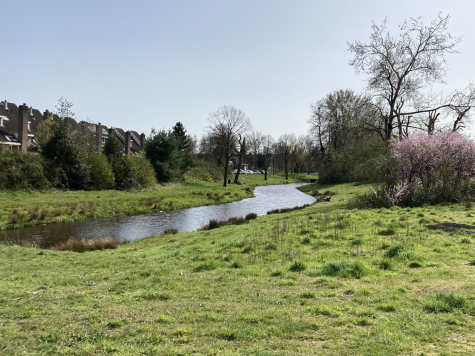Life in The Netherlands
It’s hard to imagine what life is like living in other countries, and most people probably don’t even think about life in the Netherlands. However, it’s something that I myself think about quite frequently, thanks to some friends I met on the internet. These friends include Bart, 18, and Arend, 17, who are both from the Netherlands. They inspired me to learn and helped teach me about their country, which I find fascinating.
The Netherlands is split into provinces, which Bart compared to American states. However, provinces do differ from states in that they don’t have any unique laws. Arend described provinces as “just a name you give a certain area and that’s it,” however Bart acknowledged that there were minor cultural differences. The most notable difference between provinces would be language.
The native language of the Netherlands is Dutch, but every province has a different dialect. Bart compared dialects to the different accents in the United States. However, he also acknowledged that some Dutch dialects aren’t understood everywhere in the Netherlands. One province, Friesland, has its only language, known as Frysian, which is still similar to Dutch. Another interesting part of the Dutch language is that English words have worked their way into it. Bart explained that some Dutch words are no longer used and have been replaced by the English equivalents.

Around 93 percent of Dutch citizens can speak English. Arend still described the Netherlands as “very English friendly,” but that mainly pertains to big cities. While English speakers can communicate with most residents throughout the Netherlands; cities like Amsterdam are more catered to them. Bart claims that citizens of Amsterdam “assume you’re not Dutch,” as the majority of non-Dutch citizens live there. It’s seen by many as the best place for Americans moving to the Netherlands to live, even having many English speaking job opportunities.
However, Americans still have many cultural differences to adjust to. A big difference is transportation, as people bike almost everywhere. 84 percent of Dutch people own at least one bike, which is a world record. Bart claims that “there are more bikes in the Netherlands than people.” The country is structured for cycling, including well taken care of bike lanes. Bart shared that he could bike across his entire city in 15 minutes. Dutch citizens can’t even drive cars until they’re 18, as it’s not necessary. Arend explained that cars are mostly used when going places such as Ikea, as people tend to buy larger items there that require a car to take home.
The Dutch also tend to be direct, which can come off as rude to outsiders. An example Bart gave was that the Dutch can tell random people “you look like a mess.” The directness in the Netherlands relates to the general lack of nonsense in the country. The Dutch have a saying that means “just do normal,” which Bart extended to “just act normal, then you’re already acting crazy enough.”
Another difference in culture is that restaurants in the Netherlands have smaller portions than in America. Arend compared the average Dutch meal size to the size of a kid’s meal in America. Bart described overall food in the Netherlands as efficient, but rather basic, which he also applied to the country itself. Despite calling it a basic country, Bart does love living there, stating “I wouldn’t want to live anywhere else.”
Bart doesn’t seem to be alone, as the Netherlands is considered one of the happiest countries. I don’t find that surprising as the country has an abundance of holidays, LGBTQ+ rights, and free healthcare. This article only scratched the surface of life in the Netherlands, and there’s so much more to be explored about the lifestyle there.
Reyna Renz is in 12th grade. She ikes to collect LEGO and make LEGO stop motions, and enjoys franchises such as SpongeBob SquarePants and Star Wars. She...




